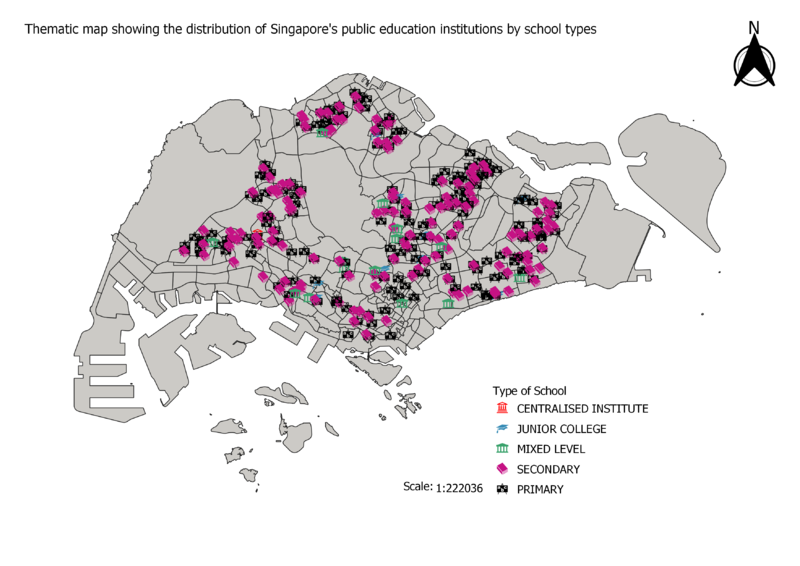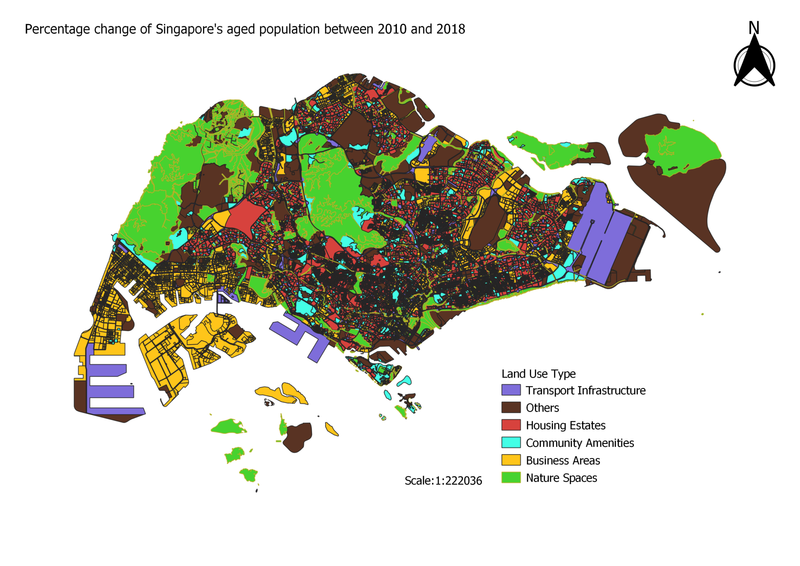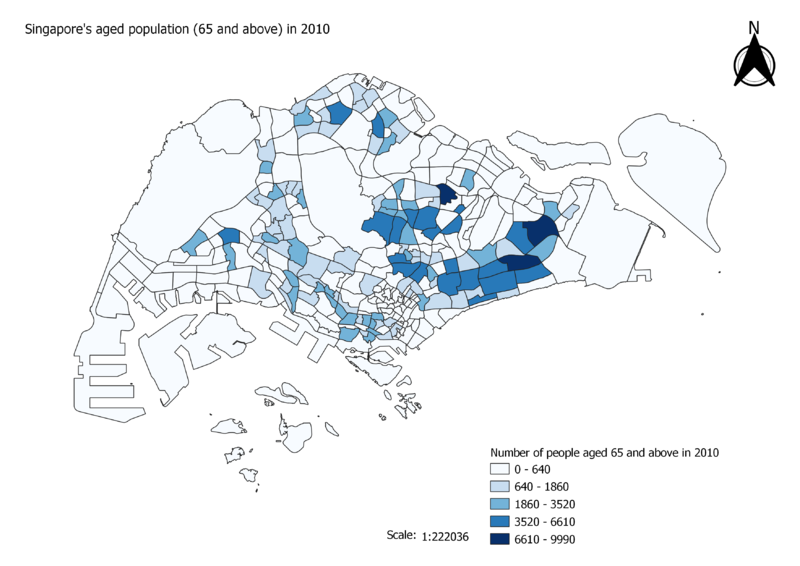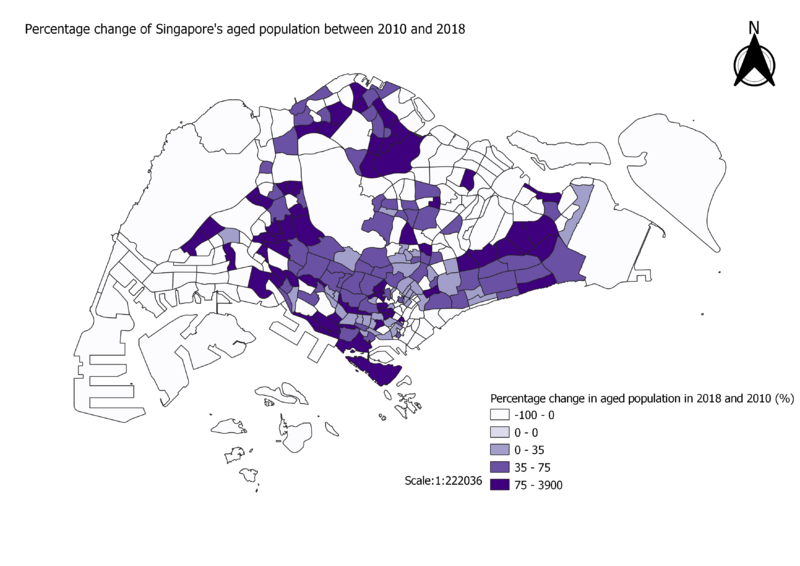Difference between revisions of "SMT201 AY2019-20G2 Ex1 Lee Sean Jin"
| Line 12: | Line 12: | ||
=== Singapore 2014 Master Plan Land Use === | === Singapore 2014 Master Plan Land Use === | ||
[[File:LandUse.png|800px|center]] | [[File:LandUse.png|800px|center]] | ||
| + | For this map, I used colours to categorize the types of uses for land. Since Singapore's land has different uses, this resulted in a multi-rainbow coloured map which made the visualisation hard. Thus I used QGIS to merge some categories together. For example, all the land that is used for business were merged together under the same category of "Business Areas" while land that is used for agriculture or parks were merged into the category of "Nature Spaces". I found that further classification of the land use types were necessary to produce a map that more concisely visualised the data. Using this method, we are able to identify the little pockets of green spaces in the dense jungle of housing estates or the amount of communal amenities surrounding each housing estate at a single glance, which makes this view more effective. | ||
<br> | <br> | ||
| + | |||
== Part Two: Choropleth Mapping == | == Part Two: Choropleth Mapping == | ||
Revision as of 23:56, 14 September 2019
Part One: Thematic Mapping
Distribution of Public Education Institutions in Singapore
I used the SVG symbols taught previously in the Hand's On exercises to categorize the schools. The types of schools are a form of categorical data, thus they can be differentiated from each other by unique symbols of different colours. I chose grey as the map base so that the bright coloured and black symbols can be easily identified on the map. This is so that the viewer can identify any trends and patterns at a glance. The increased the size of the symbols to increase their visibility as I found that the symbols were too small even when the map was zoomed in.
Singapore's Road Network System
As the data provided from LTA did not distinctly categorize the road types, I used QGIS to do this. Road names that contained "Expressway" were categorised into Expressways, names with "Road" were categorised into major roads and the remaining uncategorised roads were categorised into minor roads. For this map, I chose grey as the background map colour so as to bring out the road lines more, whereby brighter colours and darker colours can be easily identified. Apart from using colours to differentiate the different road types, I also changed the thickness of the lines for each type of road. Expressways are seen as "large" roads in reality thus their lines are the thickest. Whereas minor roads are "smaller" in reality so their thickness on the map is thinner.
Singapore 2014 Master Plan Land Use
For this map, I used colours to categorize the types of uses for land. Since Singapore's land has different uses, this resulted in a multi-rainbow coloured map which made the visualisation hard. Thus I used QGIS to merge some categories together. For example, all the land that is used for business were merged together under the same category of "Business Areas" while land that is used for agriculture or parks were merged into the category of "Nature Spaces". I found that further classification of the land use types were necessary to produce a map that more concisely visualised the data. Using this method, we are able to identify the little pockets of green spaces in the dense jungle of housing estates or the amount of communal amenities surrounding each housing estate at a single glance, which makes this view more effective.
Part Two: Choropleth Mapping
Singapore's Aged Population (65 and above) in 2010
Singapore's Aged Population (65 and above) in 2018
Singapore's Proportion of Aged Population (65 and above) in 2010
Singapore's Proportion of Aged Population (65 and above) in 2018
Percentage Change From 2010 and 2018







